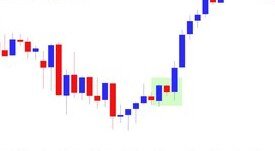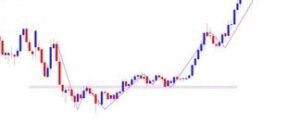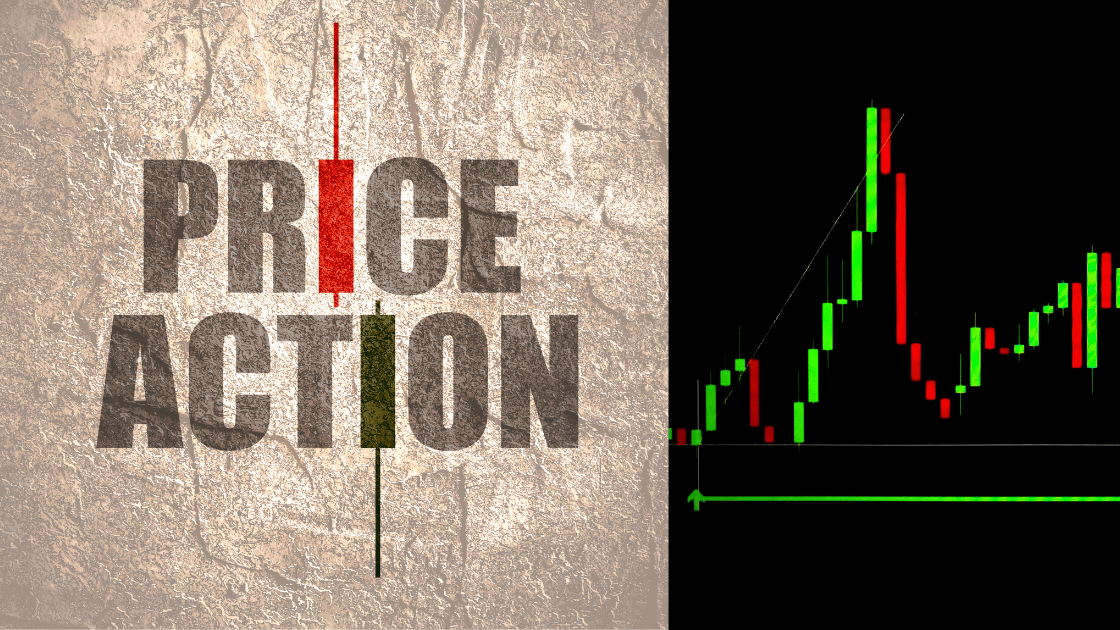Follow Price Action Trading : Learn Technical Analysis
Price Action Trading without Indicators Price action is more than just a trading strategy it is an art that involves studying how financial markets move and respond to human behavior. Price action mirrors economic principles like supply and demand.
What is Price Action Trading :
Price action is the study of historical prices, unlike many technical analysis techniques which rely on indicators, price action traders focus solely on market movement.
- Their philosophy is simple yet powerful, all available information has already been factored into currency prices so studying price action provides significant insights into its future direction.
- Price action’s greatest attraction lies in its ease. By eliminating unneeded signals, price action allows traders to make informed, well-rounded and knowledgeable choices about investing strategies.
- By understanding market terminology and learning to speak its language, traders may gain a considerable edge in their investing endeavors.
Price Action Analysis :
Price action is an ancient concept and has been used by traders in various forms for more than 200 years.
- Initially developed by Japanese rice traders during the seventeenth century who used candlestick charts to analyze price movement, it later evolved into what is known as modern price action analysis with more sophisticated techniques being utilized today.
- Now more applicable and powerful than ever with electronic trading and instant access to financial data, Price action principles remain just as applicable and powerful.
Principles of Price Action Trading Analysis :
Understanding Trends :
Trend analysis is at the core of price action analysis. By identifying and understanding a trend’s direction, traders can gain greater insight into market sentiment as well as its likely path forward.
- Trends can either go upwards, downwards or sideways (known as range) over different time frames from minutes to months.
- Trend analysis involves looking for higher highs and higher lows (in an uptrend), or lower highs and lower lows (in a downtrend).
- It is key to ride with strong trends rather than fight them head on, rather than trying to resist or fight against them by going against them.
Support and Resistance :
Support and resistance levels represent points in which a stock or market trend could pause, reverse or persist.
- Support levels indicate where demand is strong enough to prevent further price decline, while resistance indicates where supply can halt an uptrend.
- These levels can be identified through reviewing historical price action and are usually indicated by significant price movements or round numbers.
- They provide essential guidance for entry and exit points, stop-loss orders, and potential profit targets.
Candlestick patterns :
Candlestick patterns are an integral component of price action analysis, providing insight into an asset’s open, high, low, and close prices over a specific period.
- Their presence gives us information about both market sentiment and possible future directions.
- Bullish patterns such as the hammer or morning star indicate an uptrend is more likely, while bearish ones, like shooting star or evening star patterns indicate potential downtrends.
- Bullish and bearish patterns tend to be especially effective at key support and resistance levels and can help confirm price action signals.
- They are most powerful when used at key support or resistance levels as confirmation tools of price action signals and Price Action Strategies.
Price Action Trading Strategies :

Engulfing Candle :
Engulfing Candle Technical analysis uses two candlestick patterns called the Engulfing Candle as an important way of signaling significant shifts in market direction.
- A bullish engulfing pattern occurs when a small bearish candlestick is followed by one with larger bullish candles that completely engulf it signalling an uptrend ahead.
- Traders look out for this pattern to identify possible bullish reversals or continuation opportunities in their trading strategies.
- Conversely, bearish engulfing patterns occur when a bullish candlestick is eclipsed by an increasingly bearish candle, signaling a shift from bullish to bearish sentiment.
- Such formations can be especially reliable when they appear near significant support or resistance levels.
Inside Bar :

- An inside bar pattern occurs when the entire price range of one candle falls within that of its predecessor candle, suggesting a consolidation period or possible market pause, traders usually wait for a breakout from this pattern before entering any trades involving inside bars.
Breakout and Retest :
- A breakout occurs in financial markets when an asset surpasses a significant resistance level or falls below an important support level, signaling its possible start of a potential new trend in its direction.

- Following such an event, prices often retrace and test their initial breakout level before retreating again for confirmation, traders may consider entering trades during this retest phase by placing tight stops just beneath this retest level in order to capture early signs of this new trend and take.
- Advantage of any profitable trading decisions as early as possible capturing its inception for profit potential trading decisions and decisions that may emerge as soon as possible capturing its beginning before entering another trade during its confirmation phase.
Integrating Price Action into Your Trading :
Observation and Patience :
- To successfully incorporate price action trading into your trading, the first step should be observing the market without preconceived notions or bias.
- Focus on learning to identify trends, support, resistance and chart patterns while being patient as you wait for signs from the market that it intends to move in any particular direction before taking any actions.
Trade Management :
Incorporate price action into your trade management. Establish stop-loss orders at key support and resistance levels, then adjust as the trade progresses.
- Use trailing stops to capture profits during strong trends, while striving for an acceptable risk-reward ratio given potential price movements.
- Practice and Back testing are key components to becoming proficient at using price action.
- Run your strategies against historical data to assess their performance over time; this will give you confidence in your approach as well as help refine its tactics.
Price Action Trading in the Future :
Price action will continue to play an integral part of trading, thanks to technological developments that make price action analysis even easier and more accessible. Tools may even emerge that make price action analysis even simpler!
- Price action has become more integrated into other forms of analysis, including fundamental analysis. Furthermore, price action traders are becoming increasingly data-driven; using big data analytics and machine learning techniques to enhance their approaches.
- Mastering price action can be transformative for any trader or investor, offering valuable insights into market psychology and power imbalance between buyers and sellers.
- By learning to read its story, traders and investors can make more accurate predictions and strategic moves in the market for sustainable success in trading.
Conclusion :
- For traders eager to tap the power of price action trading and take their trading to the next level, we suggest immersing themselves in this exciting world of price action trading. Share your experiences with others while continually expanding your knowledge base. Happy trading..
Frequently Asked Questions :
What Is Price Action Trading?
Answer :
- Price action trading is a trading method which utilizes historical prices as the foundation for trading strategies without using traditional indicators such as trend lines or moving averages as indicators. Instead, price action trading focuses on movements and patterns to make trading decisions.
How can I identify support and resistance levels in price action trading?
Answer :
- Support and resistance levels can be identified by studying past price movements where prices have stopped moving and changed direction, or where there have been recurring price levels that prevented prices from moving higher (resistance) or lower (support).
What are Candlestick Patterns and Their Importance?
Answer :
- Candlestick patterns are visual representations of price fluctuations within a specific time period, depicting open, high, low, and close prices within each period.
- Their significance lies in being used to reveal potential market directions as well as trader sentiment.
Can Price Action Trading Be Employed on All Markets?
Answer :
- Yes, Price Action Trading can be utilized across various markets such as forex, equities, commodities, and cryptocurrencies. The fundamental concepts of support, resistance, and pattern recognition are universal.
What is a bullish and bearish engulfing pattern?
Answer :
- Its A bullish engulfing pattern occurs when a small bearish candle is followed by a larger bullish candle which fully covers it, signalling potential upward momentum. A bearish engulfing pattern occurs in reverse, suggesting potential downward momentum.
What Does an Inside Bar Indicate in Price Action Trading?
Answer :
- An inside bar signifies market consolidation and may indicate either an impending breakout or continuation in the direction of an existing trend. It occurs when the price range of one bar falls completely within that of its preceding bar.
What role do breakouts and retests play in price action strategies?
Answer :
- Breakouts signal potential new trends when the price exceeds or drops below certain resistance or support levels, often leading to significant price movements. A retest provides confirmation of its validity while offering traders an entry point into new trades.
Why is Patience Critical in Price Action Trading?
Answer :
- Patience is of utmost importance when trading price action, as this requires waiting for clear signals and confirmations before entering trades. Hasty decisions may misread market signals leading to misinterpretations of signals and potential losses.
What is the Role of Trade Management in Price Action Trading?
Answer :
- Trade management refers to setting and adjusting stop-loss orders based on support and resistance levels, using trailing stops to protect profits, and choosing an acceptable risk reward ratio that suits one’s trading strategy. With effective trade management comes greater gains while decreasing losses.
How can I learn more about price action trading?
Answer :
- To enhance your understanding of price action trading, read specialized books, participate in trading forums, watch tutorials from experienced traders and practice with historical data. Stay abreast of market trends by continuing your education.








